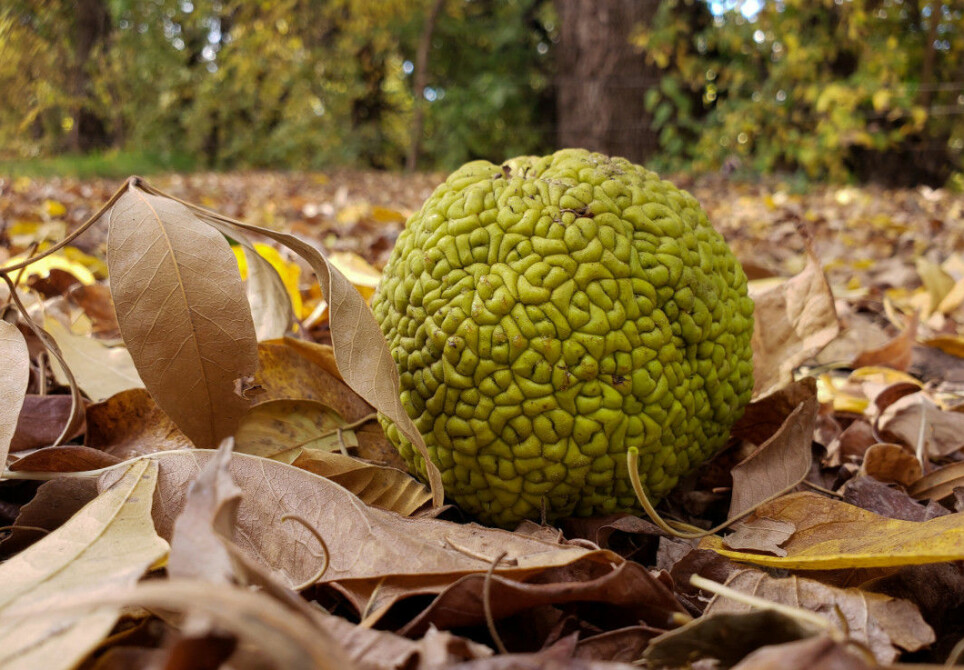
Why does the avocado have such huge seeds?
Meet the plants that have lost their enormous partners
What kind of animal is actually capable of spreading a huge avocado seed? And why does the tree Maclura pomifera make huge fruits that no one wants to eat? These are plants that are still waiting for ‘friends’ that will never return.
The question arose from the younger generation on the occasion of Friday dinner:
Why does the avocado have such giant seeds?
We adults were at a loss for an answer. Hmm, what exactly is the idea behind an avocado tree and its huge seeds? How can they possibly be dispersed, for example?
They definitely don’t float, like the coconut. Lord knows they don’t fly away in the wind. And if the intention is for animals to transport them, isn't it a rather risky evolutionary move to make a seed that is so heavy that no creature could possibly bear to carry it?
It turned out, however, that we were missing part of the picture, sitting as we were at the dinner table in the 21st century.
For the avocado makes its giant seed for a creature that no longer exists.

Megafauna
The avocado evolved in conjunction with a giant animal that lived in South America a long time ago. These included animals like the giant sloths, Lestodon or Megatherium, which were herbivores that could be almost as big as elephants.
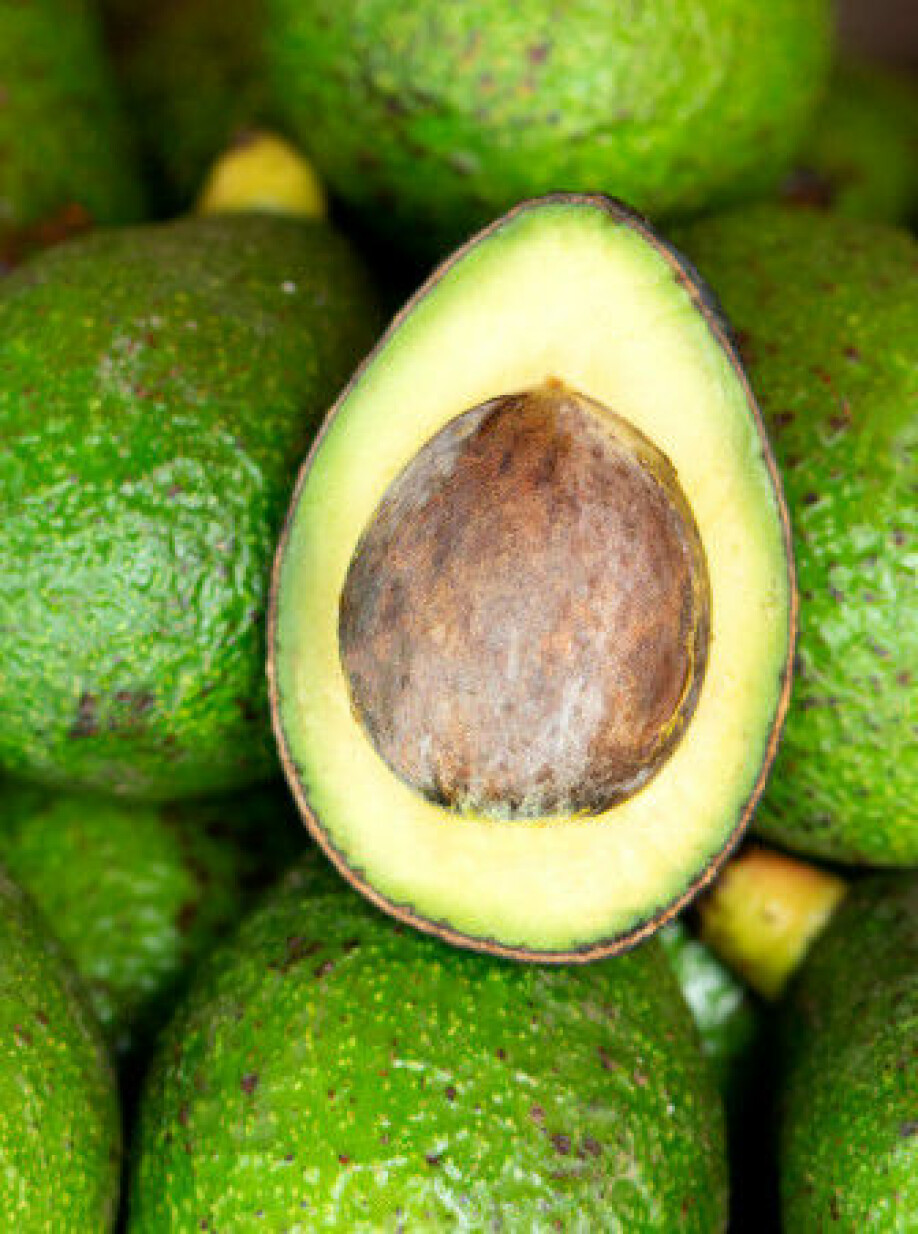
These animals were large enough to eat an avocado whole. The well-protected seed withstood its journey through the intestines of the giant sloth, and was soon properly planted in a fertile heap of manure.
“The avocado is one of the clearest ‘footprints’ left by extinct megafauna,” says Klaus Høiland, professor emeritus at the University of Oslo, to sciencenorway.no.
Altered the landscape
Høiland says that huge animals, such as mastodons, mammoths, and giant sloths and armadillos, were found on most continents. They helped to shape the environment around them. They altered the landscape, and evolved partnerships with the species around them.
Large avocado fruits with nutritious pulp became perfect mouthfuls for huge herbivores. In turn, the animals helped to spread the avocado seeds far and wide.
And the avocado was by no means the only species that made mega-fruits for mega-mouths.
Giant thorns
The thorny honey locust also evolved in partnership with large animals, now extinct. The tree belongs to the pea flower family, and makes seeds in pods, just like sugar peas or beans. But the pods of the thorny honey locust can be up to half-a-metre long, precisely adapted to huge herbivores.
But consider the feature that has given the tree part of its name.
Enormous spines protrude from the thorn tree trunk, powerful enough to protect the rest of the tree from the giant animals that once came to eat the pods.
There are other examples as well.
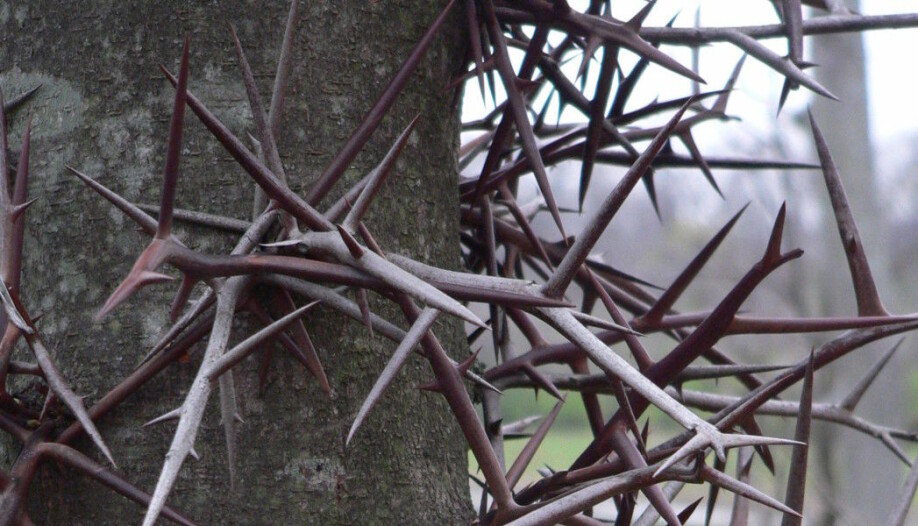
The Kentucky coffeetree is a clear candidate, with its heavy pods. Not to mention the handball-sized cannonballs that weigh the branches of Maclura pomifera, or osage orange, as the tree is called where it grows in the eastern United States.
Once upon a time, these giant fruits were breakfast and dinner for several-ton vegetarians.
But then something happened.
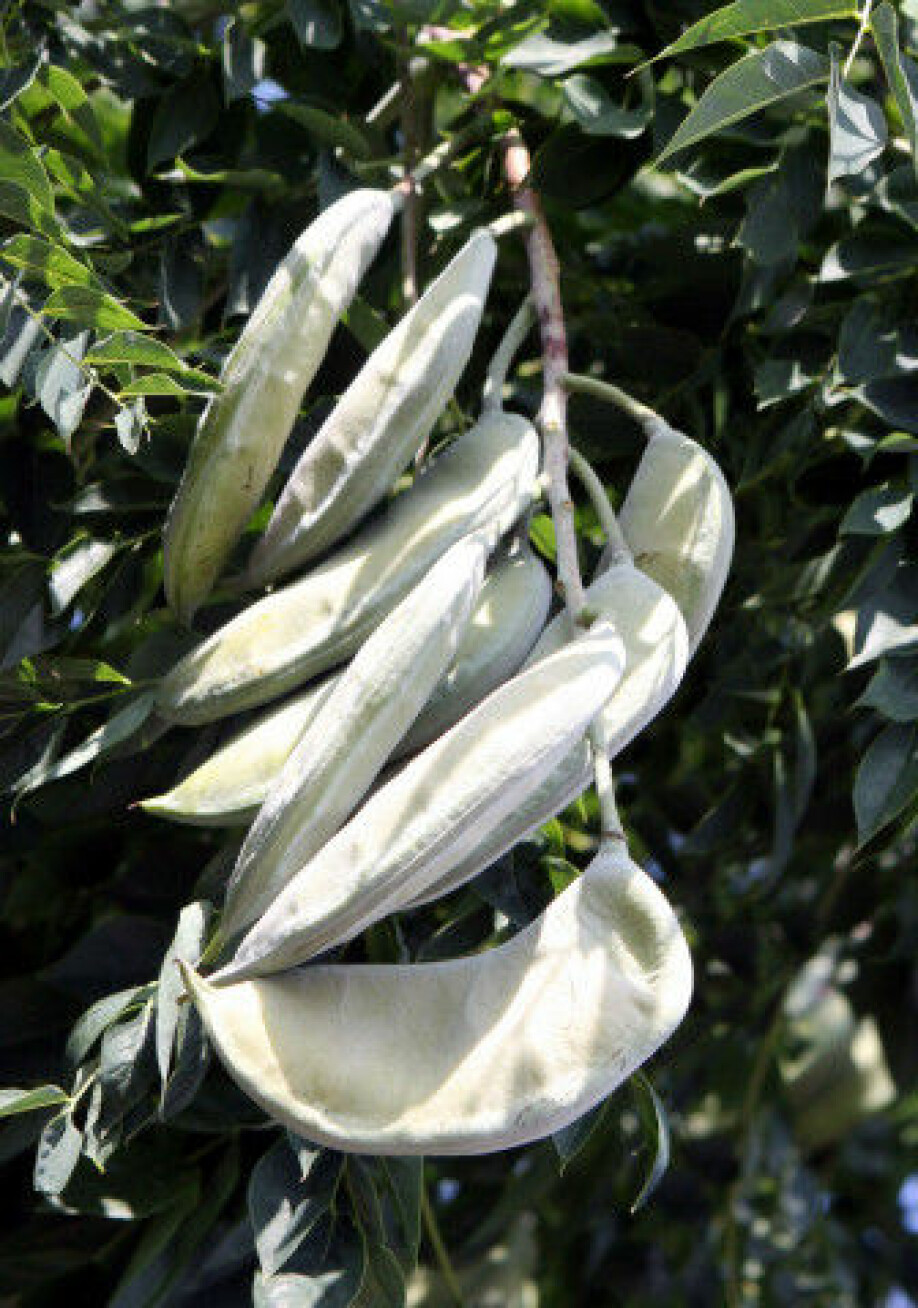
Went extinct
No one knows for sure how it happened. In the land of avocados in South America, the giant sloth was probably prey for huge predators that migrated from the north. And there is much to suggest that a certain two-legged creature with weapons and an unusually large brain also played a significant role.
At least there is no doubt about the result:
The giants fell. About 12,000 years ago, the giant sloth died out, along with most other huge herbivores.
But what happened to the plants that had specially adapted to these animals?
The partners that remained
“Many probably died out,” Høiland said
When these plants’ big partners stopped coming, there was no other creature able to scatter the giant seeds.
Other species are still waiting for a helpful creature to come.
Like the Kentucky coffeetree and osage orange. Every year, these plants make tons of fruit that eventually fall to the ground and rot. No one is particularly interested in eating them. The fruits don’t taste good and are full of annoying milky sap or substances that are toxic to today's animals.
Still other plants have entered into new partnerships — with us.
“The avocado has nutritious fruits that were also interesting to people. They were taken care of,” says Høiland.
The same probably applies to other large fruits such as papaya and cherimoya. And maybe, maybe this is also true of a tree that was abandoned even longer ago: the ginkgo.
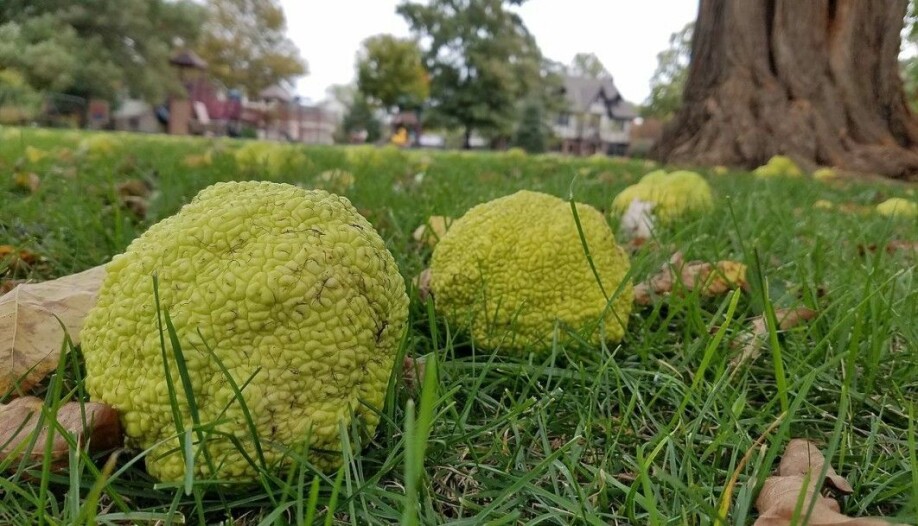
Old dinosaur food?
Millions of years ago, various species of ginkgo, also called maidenhair trees, grew all over the world. These trees make seeds with a fruit-like seed coat. They look like plums. But they don’t smell like plums.
“Ginkgo seeds smell like vomit and toe jam. It’s possible to imagine they were adapted to reptiles, such as dinosaurs,” says Høiland.
It’s at least clear that conditions for ginkgo trees worsened after the dinosaurs became extinct. From the end of the Cretaceous to the present day, every species but one became extinct.
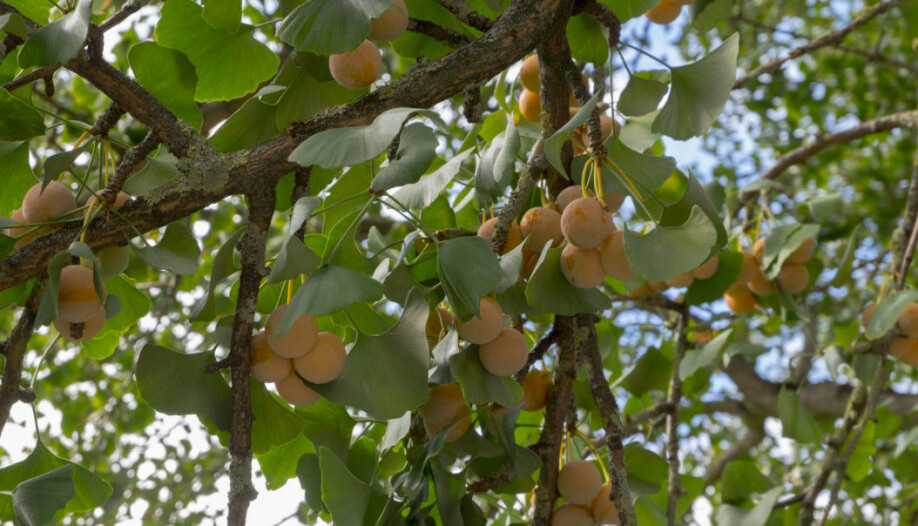
And the last species was actually in the process of disappearing. Its last stronghold was a small area in eastern China. But then a hairless two-legged animal also took an interest in the tree. Monks started cultivating the ginkgo and today humans have once again spread the species all over the world, including Europe.
Few abandoned fruits in Europe
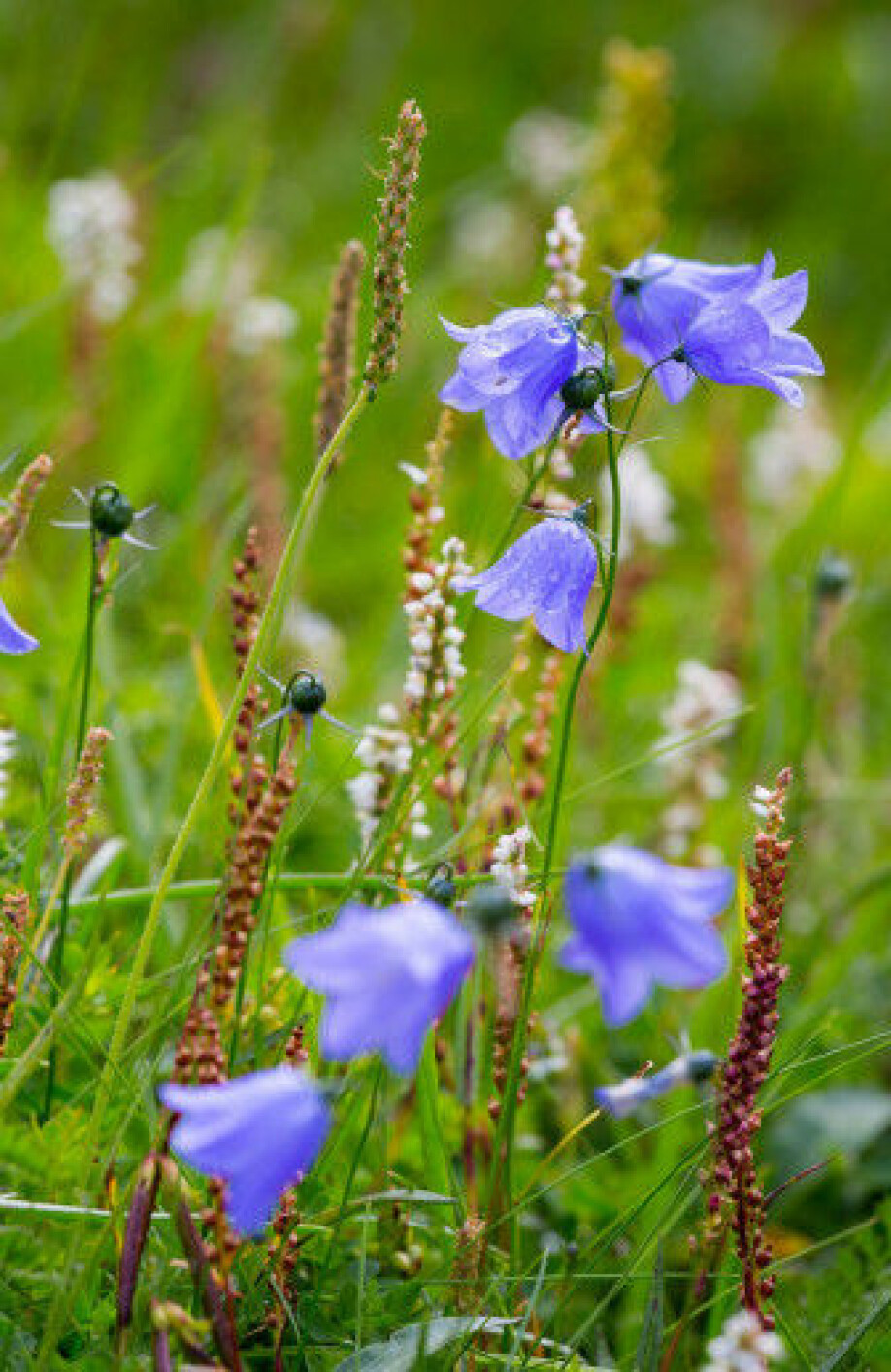
The ginkgo is even planted in Norway, and is found in the Botanical Garden in Oslo, among other locations. But otherwise, few ginkgo trees can even produce fruits here, says Høiland.
“We haven’t had a climate that allows large fruits to grow. Our megafauna, like mammoths, bison and woolly rhinos, were typically grazing animals, not fruit eaters,” Høiland said.
Nevertheless, there is likely also biological evidence from Norway’s large extinct animals, the professor believes.
Traditional cultural landscapes in Norway and the rest of Europe are characterized by a wealth of flowering plants: bluebells, daisies, buttercups and countless other plants.
“These species don’t typically grow in the forest,” Høiland said.
Instead, they thrive in open landscapes, such as old-fashioned hay meadows and pastures. Today these plants live where humans and their animals keep the forest back. But we’ve only been doing that for a few thousand years. Where did these flowers live before that?
Old mammoth grazing grounds
Presumably these plants grew in meadows maintained by grazing giants.
Mammoth, bison, muskox and wild boar kept the forest in check, Høiland believes. And when much of this megafauna died out, we humans and our animals took over. The species that thrived in meadows kept open by muskox and mammoths moved into our hayfields and pastures.
“Our meadow species are a kind of relict of the grazing areas we had in Northern Europe at the end of the last ice age,” says Høiland.
Now it is up to us to decide whether the relict survives or disappears.
In modern, intensive agriculture, there is little room for wildflowers. Hayfields and pastures have been replaced by fields and timothy in monoculture.
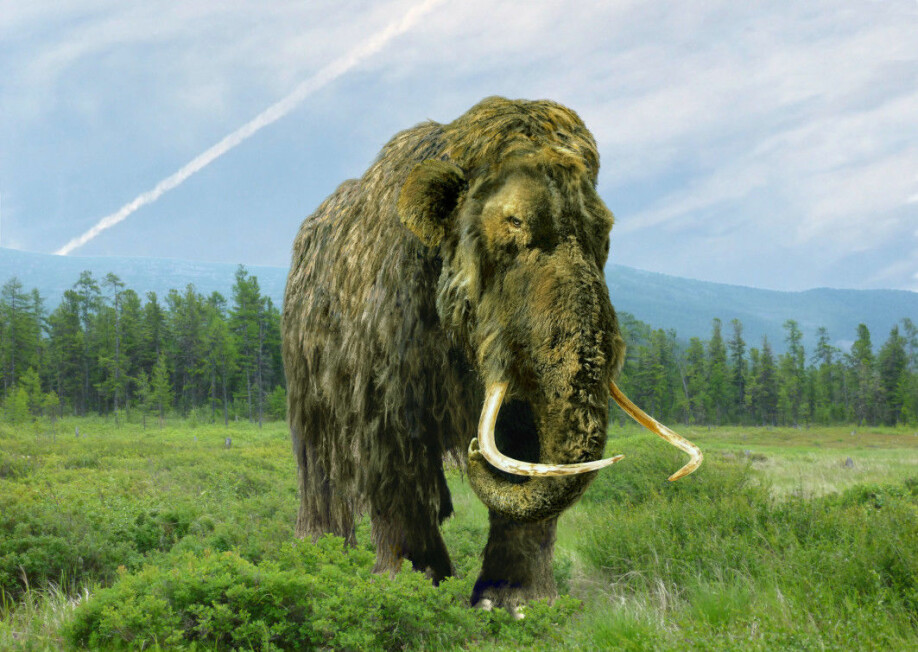
But there is still hope.
In recent years, research has made it clear that modern monocultures are a disaster for bees and other insects needed to pollinate many human food plants.
Work is underway to preserve Norway’s old cultural landscapes, and thus the flowers that likely once adorned the ground under the huge feet of rhinos and mammoths.
Translated by Nancy Bazilchuk
———































